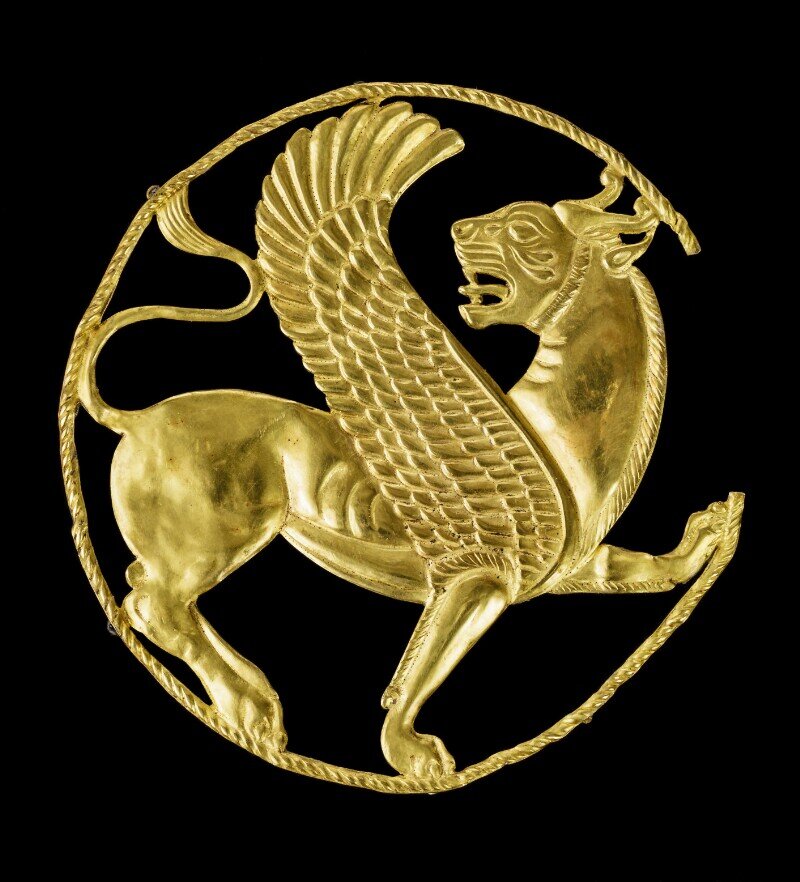U.S. exhibit explores bonds between ancient Iran, rival powers of the time

TEHRAN – An exhibition, featuring parts of ancient Iran’s history, has recently opened at the Getty Villa Museum in Los Angeles.
The exhibit focuses on the artistic and cultural ties between the rival powers of Iran, Greece, and Rome in ancient times by displaying royal sculptures, spectacular luxury objects, religious images, and historical documents assembled from major museums in the United States, Europe, and West Asia.
Entitled “Persia: Ancient Iran and the Classical World”, the event is a part of the museum’s program “The Classical World in Context”.
“The many spectacular objects on view are extraordinary expressions of Persian political and cultural identity, many of them among the most famous masterpieces of Persian art,” reads part of the announcement of the director of the museum, Timothy Potts, carried on the museum’s official website.
“As we ponder the most significant turning points in Eurasian history, there was perhaps no more momentous encounter than that between Persia and the Classical World,” he added.
“I hope this exhibition will convey how fruitful the intermingling of very different artistic and other cultural traditions was for both cultures, as can still be seen in aspects of our visual arts today.”
Many remarkable objects from Ancient Iran spanning approximately 1,200 years are on display for the first time in the U.S.
The primary segment of the exhibition examines the establishment of the Achaemenid Empire in the mid-6th century BC when Cyrus the Great captured western Asia Minor (in present-day Turkey) and conquered the Greek settlements there. Achaemenid sculpture, silver vessels, and jewelry are on display alongside Greek depictions of the Persian wars (490–79 BC). The Greek cities were long-established on the western coast of Asia Minor and the native people in nearby Lydia, Caria, and Lycia at first resisted Persian demands for submission but eventually came to terms with living in a great empire. These regions produced works both in Greek and Persian style, reflecting the complex cultural influences around them.
The second section of the exhibition begins around 330 BC, following Alexander the Great’s conquest of the Achaemenid Empire. The victorious Greeks inherited rule over Iran and much of West Asia for some time, but in the 3rd century BC another Persian dynasty, the Parthians, emerged and soon became the dominant state of the Near East, remaining in power for nearly five hundred years. It was also the primary rival of Rome, which replaced the Greeks as the new superpower of the Mediterranean, with the borderlands of Mesopotamia being a frequent battleground. The Parthian art on view in the exhibition, including luxury silver drinking vessels made for the Parthian aristocracy, is highly eclectic, displaying a mixture of Greek, Mesopotamian, Achaemenid, and nomadic Iranian influences.
The final section is devoted to the Sasanian Empire, which, beginning in 224, created a new Iranian self-image with distinctive trappings of kingship and splendid royal art, a more centralized administration, and the founding of many cities, and an aggressive military policy. Despite near-constant warfare, the Romans and Sasanians recognized the advantages of maintaining a balance of power and were often allied in fighting mutual enemies until the Arab conquest in 651. On display are palace decorations and Sasanian silver plates and vessels ornamented with depictions of royal court life, along with Late Roman and Byzantine silver that served similar purposes.
The exhibition is supported by a fully immersive film that transports visitors into the lavish palaces and audience halls of Persepolis during its height as the ceremonial capital of the Achaemenid Empire. The five-minute “Palace Experience” takes the audience along with the route ancient visitors would have taken through the capital, from the Gate of All Nations to the Apadana, and into other structures within the palaces and audience halls.
As a part of the exhibition, online visitors have the opportunity to explore a 3D re-creation of Persepolis and take an interactive tour through the palaces, terraces, audience halls, and chambers of the massive complex in southern Iran, enlivening the many relief sculptures and architecture with their original colors and textures.
The exhibition will run until August 8.
ABU/AFM
